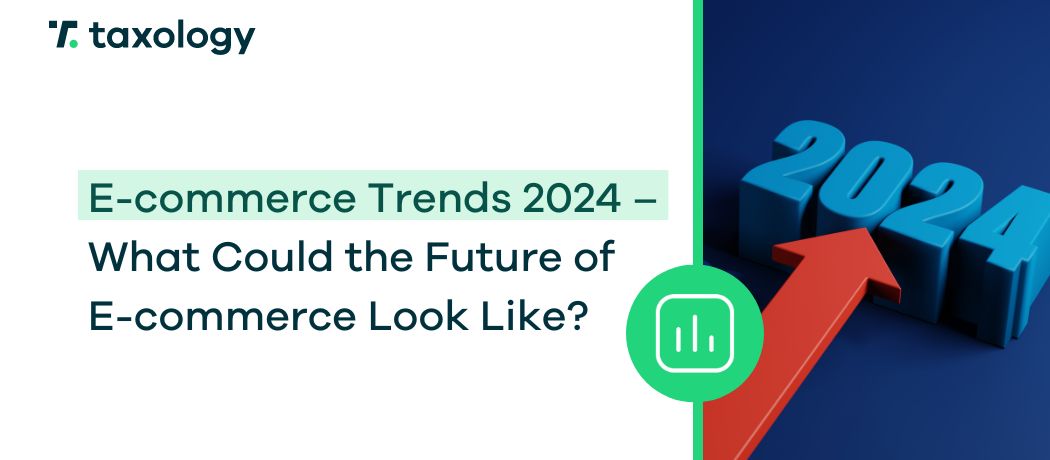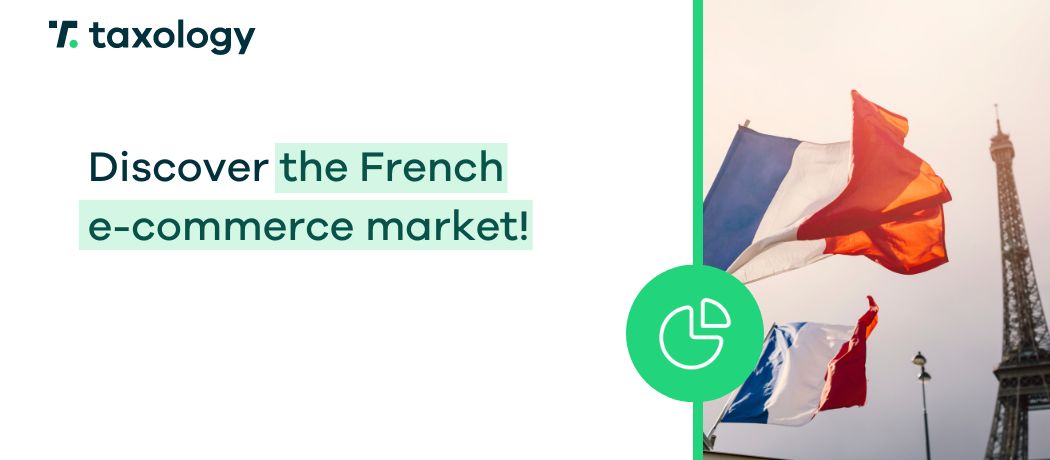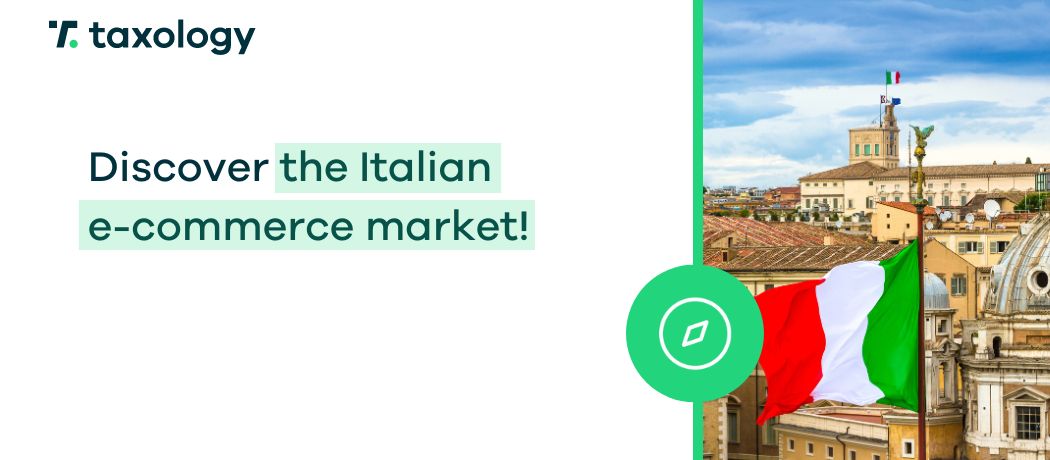France is one of the largest and wealthiest countries in Europe, making it an extremely attractive market for expansion for many entrepreneurs in the e-commerce sector. However, like any other […]
Read in: 5 minE-commerce Trends 2024 – What Could the Future of E-commerce Look Like?
- Last update: 07.02.2024
- Published: 25.01.2024
- Read in: 6 min
The e-commerce industry evolves year by year. Companies are implementing increasingly newer solutions that allow for the optimization and automation of processes, resulting in sales growth. The use of artificial intelligence and augmented reality has become commonplace. Moreover, sales are expanding onto new platforms, exemplified by social media commerce through live streams, and the emergence of new infrastructure like dark stores. The year 2024 will be no different, marking another period for many companies to meet customer expectations, with clear trends observable in their actions.
If you plan to launch an online store in 2024, this knowledge can help you lead the development of online stores you open. If you are already an entrepreneur in the e-commerce industry, this information will help you adapt your online store to market requirements.
E-commerce Trends - Artificial Intelligence (AI) and Machine Learning (ML)
For several years, artificial intelligence has been a hot topic among entrepreneurs. Online store owners, who benefit from its capabilities to optimize their business, also talk about it, and there are many options available.
Artificial intelligence helps in data analysis, for example, predictive analysis, allowing online stores to forecast sales based on historical data. Moreover, the use of artificial intelligence also comes into play when personalizing shopping experiences, such as customizing products or ads shown to customers based on their past purchases.
Some companies have also engaged AI in online customer service, guiding customers through part or even the entire purchasing process. Moreover, AI is involved in chatbots, which have been present in corporate infrastructure for years, helping customers find answers to their questions.
It’s worth adding that the development of artificial intelligence is made possible thanks to machine learning, which is the process by which computers learn how they can learn from data. Therefore, with each passing year, the use of artificial intelligence will have even more possibilities than before.
E-commerce Trends 2024 - Augmented Reality (AR)
The development of technology also offers the use of augmented reality solutions in sales. AR allows virtual reality, such as furniture visualizations, to help customers imagine how their living room will look when equipped with a certain piece of furniture. CCC has also introduced solutions using AR, allowing app users to see how they would look in a particular model of shoes.
E-commerce Trends 2024 - Utilization of Social Media for Social Commerce / Social Selling Live Commerce
Among the e-commerce trends for 2024, we can confidently include the growth of live commerce, i.e., sales during live broadcasts, and social commerce, i.e., commerce on social media. Not without reason, we mention these two phenomena together, as they directly influence each other.
Live commerce has been present since 2016 when China’s Taobao started the first sale during a live broadcast. This trend has also reached Poland and is present on platforms like Facebook or TikTok, where products are presented live and orders are collected. Particularly popular here are the clothing and cosmetics industries.
Moreover, the fact that live commerce is a significant global undertaking is evidenced by the fact that more sales platforms allow online stores on them to conduct live sales, with Amazon being an example. Additionally, the value of live commerce in 2022 was over $20 billion, with predictions of exceeding $55 billion by 2026.
Furthermore, as we mentioned earlier, live commerce is directly connected to social media, through which a large part of the sales takes place. Meanwhile, social media themselves also adapt to market requirements, introducing new advertising opportunities or linking online store pages in various formats, such as photos or stories.
It’s also worth noting that influencers, who are often hired to conduct live broadcasts or promote a product that will then appear in live commerce, are a common denominator for both models.
Let us note that not only social selling is the future of e-commerce but already plays a huge role. According to 78% of sellers using social media, they fare better than those not using these channels. Furthermore, social media is the fourth most effective sales channel, according to a HubSpot report.
E-commerce Trends 2024 - Dark Stores and Q-commerce
Dark stores, or so-called “dark shops” are also gaining interest. Although intuition may suggest that the products offered there are not entirely legal, we would like to dispel such thoughts immediately.
Dark stores are, in practice, micro-distribution centers not accessible to final consumers but to couriers who deliver these products. Dark stores are intermediate links in the supply chain, to which a producer, for example, a restaurant, sends an order. It is then compiled by a dark store employee and shipped.
It’s worth noting that dark stores were a response to market needs during the pandemic, but even after reopening and lifting restrictions, they continue to grow in popularity.
However, it’s important to know that an increasing number of dark store facilities are drawing the attention of authorities, which in some countries (e.g., Spain or the Netherlands) have restricted their activities, arguing this fact as a threat to traditional trade and the local economy.
Meanwhile, Q-commerce (quick commerce), also known as e-grocery, is a sub-discipline of e-commerce focused on fast order delivery, concentrating on the gastronomy industry, exemplified by Uber Eats, Glovo, or Pyszne.pl. Let’s clarify that q-commerce is not only about delivering ready-to-eat dishes but also about electronic grocery orders, for example, in Biedronka or Carrefour networks.
According to Statista, revenues from the q-commerce market will exceed $200 billion in 2027, with estimates for the past year 2023 at $123 billion. Meanwhile, in 2022, the number of consumers in this branch of online commerce was over 420 million.
E-commerce Trends 2024 - Direct-to-Consumer (D2C) Sales
While dark stores are an additional link in the online sales supply chain, many companies are also focusing on direct-to-consumer (D2C) sales, bypassing intermediate stages such as wholesalers, distribution centers, or retail stores. The producer ships the product directly to the customer, as a result, can better build a relationship with the consumer, control prices, or conduct direct communication.
According to Statista’s forecasts, the value of orders carried out on a D2C basis will exceed $213 billion in the United States alone in 2024.
E-commerce Trends 2024 - International Sales (Cross-border)
Cross-border, i.e., international or cross-border sales, is a trend that has been maintained for years. Expansion provides the opportunity to introduce new products to foreign markets but also allows a new customer to notice the company and buy its goods or services, increasing profits, prestige, and the company’s position.
In 2024, the cross-border trend will likely continue, but now the sales growth for many companies will not come from expansion into Western markets but towards the South. Recall that Allegro debuted in the Czech market last year. Moreover, Kaufland Global Marketplace is present there and in Slovakia, and there is increasing talk about Romania’s eMAG. Furthermore, expansion to the South for many companies will not be as costly as to Western markets.
Juniperresearch predicts that by 2028, the cross-border market will grow by 107%, with the total value of international transactions exceeding $1.6 trillion in 2023.
However, it’s important to keep in mind that entering new markets also brings new challenges, which we describe in the articles: Obstacles in foreign expansion and Analysing a new market prior to expansion.

Are you selling abroad? Remember about VAT!
This tax is an integral part of e-commerce. If you need support in related matters, such as registrations, settlements, declarations or VAT OSS, contact us!
Schedule a consultationE-commerce Trends 2024 - Subscription Model
More companies are also opting for the subscription model, which will probably be even more common in 2024. It’s worth adding that under the term e-commerce in this case, purchases of physical goods are not the only ones included, but also streaming services (Netflix or Spotify) or the availability of computer software (Office 365).
However, it’s also worth noting that companies selling physical products are deciding to operate in a subscription model, sending their subscribers blind boxes – packages whose contents the recipients previously do not know.
Regarding the subscription model in e-commerce, Forbes.com already indicated in 2022 that this branch of online commerce could exceed $900 billion in 2026.
E-commerce Trends 2024 - Eco-friendly E-commerce and Re-commerce
Due to the rise in awareness and care for ecology and the environment, more companies are implementing ECO policies, allowing for packaging recycling or the multiple uses of products. Add that eco-friendly e-commerce is not only about eco-friendly products but also eco-friendly means of transport, so-called green logistics, which involves the use of electric vehicles for deliveries, saving paper in documentation management, or using renewable energy sources for company operations.
Another trend that has been present for years but will continue to grow is re-commerce, i.e., the sale of used products that thus gain a second life. Online trade in the re-commerce model occurs, for example, on OLX or Vinted.
According to a report from Recommercereport.com in 2023, as many as 85% of consumers bought something used, with 27% doing so for the first time in their shopping history. Meanwhile, the predicted value of the re-commerce industry is over $276 billion in 2028.
Trends 2024 E-commerce - Same-day Delivery and Out-of-Home Delivery
Trends in 2024 will likely also concern delivery, and we’re not just talking about green logistics mentioned earlier. Entrepreneurs are well aware that the delivery time of a product is crucial for the customer, hence the effort to deliver the package even on the same day (same-day delivery).
Moreover, in Poland, for years, packages have not been delivered to homes but to parcel lockers, but this does not mean that companies are not looking for new solutions to take out-of-home delivery to an even higher level. An example of such a situation is parcel deliveries during industry events during the event by specialty stores.
E-commerce Trends 2024 - Summary
According to predictions, the future of e-commerce looks bright, contributed by numerous solutions that constantly evolve to meet customer expectations and the development of technology and artificial intelligence. As a result, not only does market competitiveness increase, but so does the comfort of shopping for customers and the quality of order fulfillment.
However, it’s important to remember that the e-commerce industry, both domestically and internationally, comes with VAT obligations that, if neglected, can result in penalties and sanctions. If you are running a business and need support in VAT and VAT OSS matters – for registrations, settlements, or declarations – or in e-commerce accounting, schedule a consultation, and our experts will take care of the rest!




